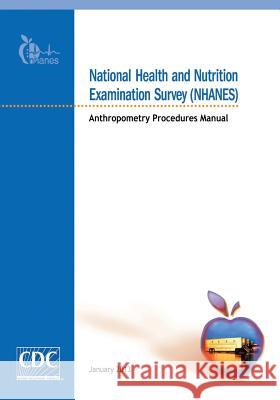National Health and Nutrition Examination Survey (NHANES): Anthropometry Procedures Manual » książka
National Health and Nutrition Examination Survey (NHANES): Anthropometry Procedures Manual
ISBN-13: 9781499243628 / Angielski / Miękka / 2014 / 114 str.
National Health and Nutrition Examination Survey (NHANES): Anthropometry Procedures Manual
ISBN-13: 9781499243628 / Angielski / Miękka / 2014 / 114 str.
(netto: 76,19 VAT: 5%)
Najniższa cena z 30 dni: 80,00
ok. 16-18 dni roboczych
Bez gwarancji dostawy przed świętami
Darmowa dostawa!
Anthropometry is the study of the measurement of the human body in terms of the dimensions of bone, muscle, and adipose (fat) tissue. The word "anthropometry" is derived from the Greek word "anthropo" meaning "human" and the Greek word "metron" meaning "measure." The field of anthropometry encompasses a variety of human body measurements. Weight, stature (standing height), recumbent length, skinfold thicknesses, circumferences (head, waist, limb), limb lengths, and breadths (shoulder, wrist) are examples of anthropometric measures. Several indexes and ratios can be derived from anthropometric measurements. Perhaps the most well-known indicator of body fatness is the body mass index or "BMI." BMI values are calculated for NHANES participants using measured height and weight values as follows: weight (kilograms)/height (meters squared). BMI criteria are used to screen for weight categories: underweight (BMI values less than 18.5), normal or desirable weight (BMI values 18.5-24.9), overweight (BMI values 25.0-29.9), obese-Class I (BMI values 30.0-34.9), obese-Class II (BMI values 35.0-39.9), and extremely obese (BMI values greater than 40.0) (National Institutes of Health, 1998). The NHANES BMI results are used to track weight trends in the U.S. population. The National Institutes of Health, Centers for Disease Control and Prevention (CDC), and many other research groups have reported on the health risks associated with overweight and obesity using NHANES interview and health examination data.
Zawartość książki może nie spełniać oczekiwań – reklamacje nie obejmują treści, która mogła nie być redakcyjnie ani merytorycznie opracowana.











